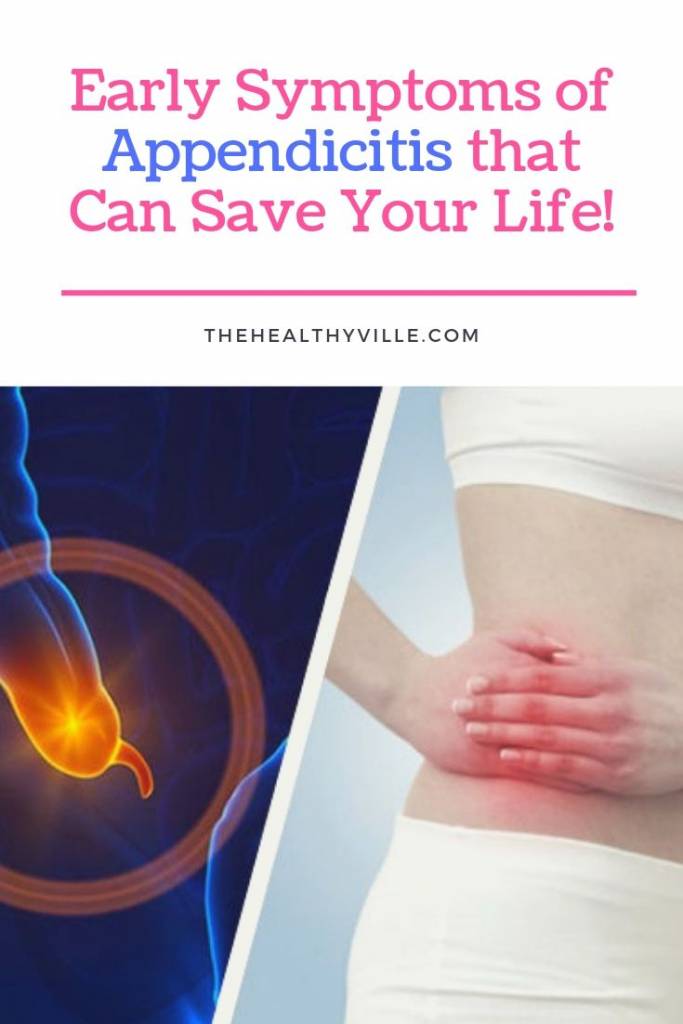The early symptoms of appendicitis are similar to the symptoms of other common diseases. But you need to recognize them on time!
Appendicitis is inflammation of the appendix, a sac-shaped organ connected to the large intestine. This organ does not fulfill any vital function and it is possible to lead a normal life without it.
It is believed to contain part of lymphoid tissue that would help cope with certain infections.
Although appendicitis itself is not serious, if left untreated it could get worse and cause complications, such as peritonitis, which can be fatal. That is why it is important to seek medical attention at the slightest suspicion.
It may take 48-72 hours for the appendix to break since it begins to swell. Then, several early symptoms of appendicitis appear that are important to recognize:
Early symptoms of appendicitis
Abdominal pain
The first symptoms of inflammation are usually the gradual appearance of cramps, mild diarrhea or pain throughout the abdomen. The more the appendix is inflamed, the more the abdominal wall is irritated.
This irritation can cause acute localized pain in the lower right part of the abdomen, which usually worsens as the disease progresses.
Slight fever
Appendicitis usually causes fevers between 37.2 ° C and 38 ° C, sometimes accompanied by chills. If the appendix bursts, the infection could cause higher temperatures and a higher heart rate.
Digestive upset
Appendicitis can cause nausea and vomiting. Some people lose their appetite and feel they can’t eat. Constipation or severe diarrhea can also be warning symptoms.
Symptoms of appendicitis in children
Children cannot always identify their discomfort, the type of pain, or the place where they suffer. Therefore, it may be more difficult to conclude if they suffer from appendicitis; since it can be easily confused with a stomach virus or a urinary tract infection.
Children under two years often show the following symptoms:
- Vomiting
- Bloating
- Sensitivity in the abdomen
Older children and teenagers are more likely to experience the following:
- Sickness
- Vomiting
- Pain in the lower part of the abdomen on the right side
Symptoms of appendicitis during pregnancy
Many early symptoms of appendicitis can be similar to some of the discomforts of pregnancy, such as cramping and nausea.
However, some symptoms may vary. Keep in mind that during pregnancy, the appendix moves upwards; Therefore, it is possible that the pain is located in the upper abdomen instead of the lower right.
Pregnant women suffering from appendicitis may be more exposed to experience symptoms such as:
- Acidity
- Gas
- Alternate episodes between constipation and diarrhea.
Which are the risk factors? Can I prevent appendicitis?
Appendicitis can manifest at any time, but usually occurs more frequently between 10 and 30 years of age, and is common in both men and women.
It cannot be prevented, but some precautions can be taken to reduce the risk of suffering from it, such as following a diet rich in fiber, with multiple fruits and vegetables.
Some foods high in fiber that can help you are:
- Raspberries
- Apples
- Pears
- Artichokes
- Green peas
- Broccoli
- Lentils
- Black beans
- Bran flakes
- Barley
- Oatmeal
- Fiber and vegetables
Increasing fiber intake helps prevent constipation and, consequently, the accumulation of fecal matter, which can cause appendicitis.
There are no home remedies and trying to treat appendicitis at home will only complicate the patient’s condition.
See your doctor immediately if you suspect the symptoms point to appendicitis. The doctor is the only one who can determine if it is really an appendicitis.
You are likely to ask for a blood and urine test to check for an infection or not, as well as an abdominal ultrasound or CT scan to determine the level of inflammation in your appendix.
Don’t forget to SHARE the early symptoms of appendicitis with your friends and family on your social networks!

